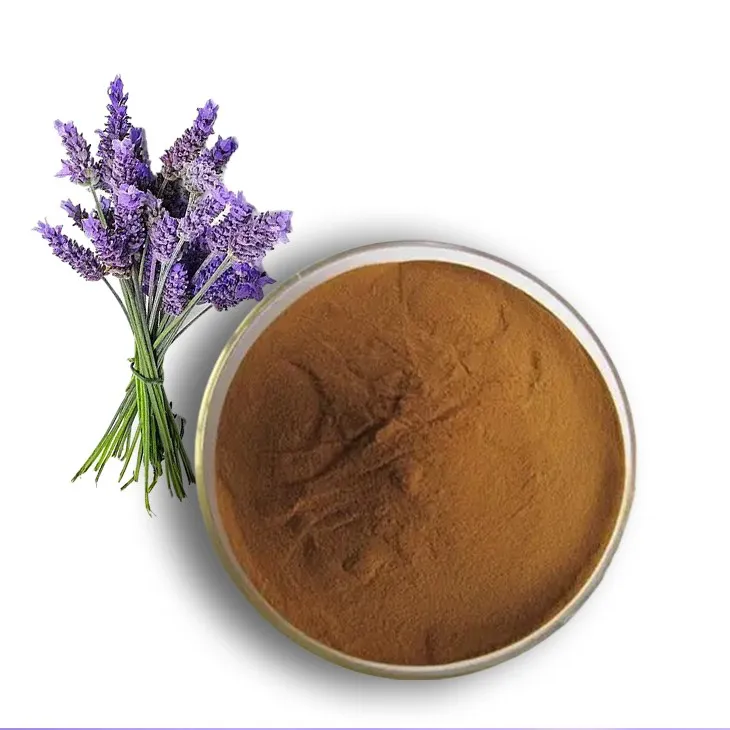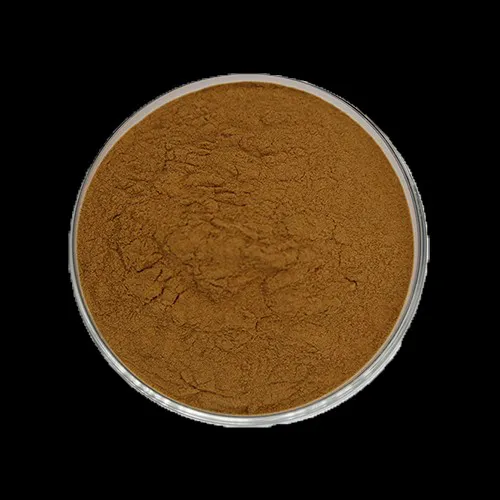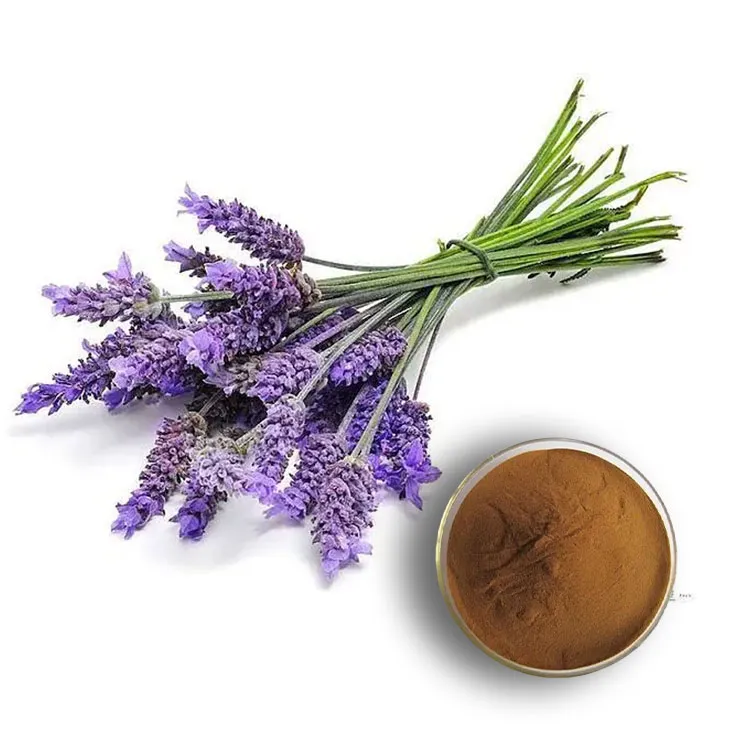- 0086-571-85302990
- sales@greenskybio.com
Extraction technology and production process of lavender extract.
2024-11-28

1. Introduction
Lavender Extract has gained significant attention in various industries, such as the cosmetic, pharmaceutical, and food industries, due to its numerous valuable components. Understanding the extraction technology and production process is crucial for the efficient utilization of lavender resources.

2. Extraction Technologies
2.1 Steam Distillation
Steam distillation has been a traditional and widely - used method for extracting Lavender Extract. It is based on the principle of vaporizing the volatile components of lavender under specific temperature and pressure conditions.
The process involves several steps. First, the lavender plant material is placed in a distillation apparatus. Then, steam is introduced into the apparatus. As the steam passes through the lavender, it heats up the plant material and causes the volatile compounds to vaporize. These vaporized compounds, along with the steam, are then condensed back into a liquid form. The resulting liquid contains both water and the Lavender Extract. Since the extract is immiscible with water, it can be separated by using a separating funnel or other separation techniques.
One of the main advantages of steam distillation is that it is a relatively simple and well - established method. It can extract a wide range of volatile components from lavender, including essential oils. However, it also has some limitations. For example, the process can be time - consuming, and some heat - sensitive components may be degraded during the long - term heating process.
2.2 Microwave - Assisted Extraction
Microwave - assisted extraction is a more modern extraction technique. It utilizes microwave energy to disrupt the plant cells of lavender and facilitate the release of active substances, thereby accelerating the extraction process.
In this method, the lavender sample is placed in a microwave - compatible container along with a suitable solvent. The microwave radiation is then applied. The microwaves cause the molecules in the plant cells to vibrate rapidly, which breaks down the cell walls and allows the active components to be more easily extracted into the solvent. After the extraction process, the mixture is filtered to separate the solid plant material from the extract - containing solvent.
Microwave - assisted extraction has several benefits. It is much faster compared to steam distillation, which can significantly reduce the extraction time. Additionally, it can often achieve a higher extraction yield and better preserve the bioactivity of the extracted components. However, this method requires specialized microwave equipment and careful control of the extraction parameters to avoid over - extraction or degradation of the components.

3. Production Process
3.1 Raw Material Preparation
The production process of lavender extract starts with raw material preparation. High - quality lavender should be selected as the starting material. This involves considering factors such as the variety of lavender, the growth conditions, and the harvesting time.
Once the lavender is harvested, it needs to be properly dried. Drying is an important step as it helps to remove excess moisture from the plant material. There are different drying methods available, such as air drying, sun drying, and oven drying. Air drying is a natural and gentle method, but it may take a longer time. Sun drying can be faster but requires suitable weather conditions. Oven drying offers more control over the drying process, but the temperature and drying time need to be carefully monitored to avoid over - drying or heat damage to the lavender.
After drying, the lavender may need to be further processed, such as grinding or chopping, to increase the surface area available for extraction. This can improve the efficiency of the extraction process.
3.2 Extraction
Depending on the chosen extraction technology, either steam distillation or microwave - assisted extraction is carried out. As described earlier, steam distillation involves vaporizing the volatile components with steam and then condensing them, while microwave - assisted extraction uses microwave energy to disrupt the cells and extract the active substances.
During the extraction process, the choice of solvent is also crucial. In some cases, water can be used as the solvent, especially for steam distillation where water is an integral part of the process. For other extraction methods, organic solvents such as ethanol or hexane may be used. The choice of solvent depends on the solubility of the target components in the solvent, as well as the safety and environmental considerations.
3.3 Concentration and Standardization
After extraction, the obtained lavender extract usually contains a large amount of solvent and needs to be concentrated. Concentration can be achieved through methods such as evaporation under reduced pressure. By reducing the pressure, the solvent can be evaporated at a lower temperature, which helps to preserve the quality of the extract.
Standardization is another important step in the production process. This involves adjusting the concentration of the active components in the extract to meet certain quality standards. Standardization ensures the consistency of the product quality, which is essential for its application in various industries. For example, in the cosmetic industry, the standardized lavender extract can be used to produce products with consistent fragrance and therapeutic effects.
3.4 Packaging
Packaging plays a vital role in maintaining the quality of the lavender extract. The extract is sensitive to factors such as light, oxygen, and moisture, and proper packaging can protect it from these adverse factors.
Dark - colored glass bottles are often used for packaging lavender extract. The dark color can block out light, preventing photo - degradation of the components in the extract. Additionally, the bottles are usually sealed tightly to prevent the ingress of oxygen. Some packaging may also include desiccants to absorb any moisture that may be present. Packaging materials should also be inert and not react with the extract.

4. Conclusion
In conclusion, the extraction technology and production process of lavender extract are complex and multi - faceted. Steam distillation and microwave - assisted extraction are two important extraction techniques, each with its own advantages and limitations. The production process involves raw material preparation, extraction, concentration and standardization, and packaging. Each step is crucial for obtaining a high - quality lavender extract that can be widely used in various industries.
FAQ:
What is the principle of steam distillation in lavender extract extraction?
Steam distillation in lavender extract extraction operates on the principle of vaporizing the volatile components of lavender under specific temperature and pressure conditions.
How does microwave - assisted extraction work in obtaining lavender extract?
Microwave - assisted extraction works by using microwave energy to disrupt the plant cells of lavender and facilitate the release of active substances, thus accelerating the extraction process.
Why is raw material preparation important in the production process of lavender extract?
Raw material preparation is important in the production process of lavender extract because high - quality lavender should be selected and properly dried before extraction. This helps to ensure the quality of the final extract.
What are the key steps after the extraction of lavender extract?
After the extraction of lavender extract, the key steps are concentration and standardization. These steps help to adjust the properties of the extract to the desired quality and potency.
How does packaging affect the quality of lavender extract?
Packaging affects the quality of lavender extract as it needs to protect the extract from factors such as light, oxygen, and moisture. Proper packaging helps to maintain the integrity and stability of the extract.
Related literature
- Advanced Extraction Technologies for Lavender Essential Oil"
- "Optimization of the Production Process of Lavender Extract"
- "The Science behind Lavender Extract Extraction and Production"
- ▶ Hesperidin
- ▶ citrus bioflavonoids
- ▶ plant extract
- ▶ lycopene
- ▶ Diosmin
- ▶ Grape seed extract
- ▶ Sea buckthorn Juice Powder
- ▶ Beetroot powder
- ▶ Hops Extract
- ▶ Artichoke Extract
- ▶ Reishi mushroom extract
- ▶ Astaxanthin
- ▶ Green Tea Extract
- ▶ Curcumin Extract
- ▶ Horse Chestnut Extract
- ▶ Other Problems
- ▶ Boswellia Serrata Extract
- ▶ Resveratrol Extract
- ▶ Marigold Extract
- ▶ Grape Leaf Extract
- ▶ blog3
- ▶ blog4
-
Suppliers of Organic β - Carotene Powder.
2024-11-28
-
100% Pure Organic Black Garlic Extract.
2024-11-28
-
The best - quality astaxanthin.
2024-11-28
-
Active components in bayberry extracts.
2024-11-28
-
Chinese Deer Antler Extract Manufacturers
2024-11-28
-
Horse Chestnut Extract
2024-11-28
-
Agaricus Blazei Extract
2024-11-28
-
Red Date Extract
2024-11-28
-
Black Pepper Extract
2024-11-28
-
Mulberry leaf Extract
2024-11-28
-
Nettle Root Extract
2024-11-28
-
Passionflower Extract
2024-11-28
-
Tamarind extract powder
2024-11-28
-
Lemon Balm Extract
2024-11-28
-
Chaste Berry Extract
2024-11-28





















